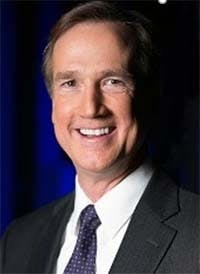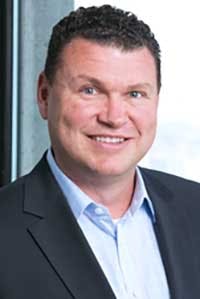Data Center Geography: Think Globally AND Locally in 2018
Today we continue our Data Center Executive Roundtable, a quarterly feature showcasing the insights of thought leaders on the state of the data center industry, and where it is headed. In today’s discussion, our panel of experienced data center executives – Aligned Energy CEO Andrew Schaap, Digital Realty CTO Chris Sharp, RagingWire Data Centers Vice President of Marketing James Leach, and Chris Bair, Vice President of Sales and Marketing for Iron Mountain Data Centers – discuss trends in site selection and data center geography
The conversation is moderated by Rich Miller, the founder and editor of Data Center Frontier.
Data Center Frontier: Data center geography is a hot topic. What geographic markets will be strongest in 2018, and why? What are the up-and-coming markets that may make headlines in 2018?
JAMES LEACH, RagingWire Data Centers
James Leach: We all know that top local markets matter in the data center industry. The top 15 data center markets globally represent 70 to 80 percent of global data center sales. The top 6 US markets represent about 70 percent of US sales, and the US represents about 50 percent of the world’s data center sales. Once you get momentum in a local data center market, it’s hard to stop.
Data centers might be local, but applications are inherently global. As soon as you plug your application into the Internet, it instantly becomes global. Whether you have one user, 10 users, or 1 million users, you need to design your computing architecture from Day 1 to support a global user base.
So the strategic question is how are we integrating local data center markets to become a seamless, global data center platform? We need global reach, along with global design, capacity, and operations.
Currently there are a few data center companies with truly global reach. Let’s take a look at the top three data center companies worldwide. Equinix is in 21 countries. Digital Realty is in 11 countries. NTT Communications is in 20 countries. The challenge is that many countries require that global multi-nationals create independent companies to operate within their borders.
A global data center company may have a common brand across all countries, but they typically don’t have a common contract for customers. Customers are often asked to sign and manage multiple purchase agreements governed by the laws of different countries and jurisdictions. We need global agreements to support global data center deployments.[clickToTweet tweet=”Jim Leach of RagingWire: The top 6 American data center markets represent about 70 percent of US sales.” quote=”Jim Leach of RagingWire: The top 6 American data center markets represent about 70 percent of US sales.”]
From a design perspective, how often do you tour data centers from the same company that have significantly different designs? Globally this problem is significantly exacerbated. We need consistent reference designs that can be deployed globally while allowing for local modifications.
For capacity, customers need to be able to sign up for a defined capacity across multiple data centers worldwide and have the option to move capacity between data centers as the needs of their business change.
Lastly, we need a global operational model that enables a single customer team to manage their deployments in multiple data centers worldwide with common metrics and procedures. This operational model should be developed from the ground up and leverage best practices and centers of excellence.
CHRIS SHARP, Digital Realty
Chris Sharp: It’s less to me about the hot news markets, and more about how and why markets get and stay hot.
There’s a level of efficiency for natural expansion with an existing tier one market, and that’s where we see a ton of demand from major cloud service operators who are expanding to meet the need of their broader consumer base. You can’t service the world from one market, but you can service it from ten. So, you’re going to see further expansion in all the tier one major markets.
That said, enterprise and cloud needs in Asia and Europe are only continuing to accelerate, which is why we’ve done some of the builds that we have done in Japan, Germany and the Netherlands.
ANDREW SCHAAP, CEO of Aligned Energy
Andrew Schaap: As they have in prior years, the top-tier data center markets in the U.S. – such as Dallas-Fort Worth, Phoenix and Northern Virginia – will continue to strengthen and expand in 2018. These markets have developed ecosystems that consistently benefit end-users through access to top technical talent, efficient networking and electricity costs, and attractive tax incentives. As more data center providers participate and contribute to the system, the momentum behind these markets will build on itself and create a virtuous cycle.
However, companies are beginning to consider markets in second-tier locations in order to diversify their risk and avoid oversaturation, whether from a geographic, vendor, utility or networking standpoint. In 2018, we’ll likely observe activity that launches new markets where access to professional talent, tax breaks, electricity and a friendly business environment is widely available and cost-efficient.
Aligned Energy is well positioned to help clients as they are thinking of net new markets where they need diversification in their supply chain.
CHRIS BAIR, Iron Mountain
Chris Bair: We think the major interconnection markets in the US will continue to be disruptive in 2018 and beyond—particularly those with favorable energy costs and tax benefits for the operators and our customers.
We also think that you need to be in the “right” markets to meet the needs of your vertical customers. IRM’s largest vertical (corporately) is financial services. We’ve purposefully invested in London, NYC/NJ, NoVa, Boston and Singapore to ensure our footprint is relevant to FSIs (financial services institutions).
NEXT: How might new investors and M&A impact the industry in 2018?
Keep pace with the fact-moving world of data centers and cloud computing by following us on Twitter and Facebook, connecting with me on LinkedIn, and signing up for our weekly newspaper using the form below:
About the Author







